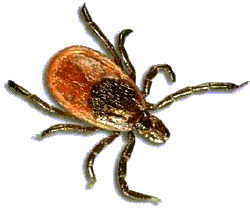|
Bloodborne
Pathogen Training Manual, Yale University, p. 12
Laboratory-
and some other Occupationally-acquired Microbial Diseases. A bibliography
Journal
Abstracts on Blood & Organ Donations
If the researchers are using the hugely inaccurate
ELISA as their initial screening tool, and then the CDC criteria on Western
blot in case of positive ELISAs, just how trustworthy are the studies
reporting no infection through donated blood and organs? As a reminder,
IgM reflects a new infection or reactivation of a previous infection,
while IgG reflects an ongoing infection. The IgM will turn negative before
the IgG will in those cases where the immune system has been able to successfully
fight the infection, or drugs taken to quash the infection have been effective.
Survival
of Borrelia burgdorferi in blood products. (1989)
Prevalence
of Erythema migrans Borreliosis in blood donors. (1989)
Survival
of Borrelia
burgdorferi
in human blood stored under blood banking conditions. (1990)
Lyme
disease--another transfusion risk? (1989; Comment)
Prevalence
of antibodies to Borrelia
burgdorferi
in forestry workers and blood donors from the same region in Switzerland.
(1989)
Survival
of Borrelia
burgdorferi
in antibiotically treated patients with Lyme borreliosis. (1989)
Borrelia
burgdorferi:
survival in experimentally infected human blood processed for transfusion.
(1990)
Current
concepts on the transmission of bacteria and parasites by blood components.
(1995)
Babesiosis
in a renal transplant recipient acquired through blood transfusion.
(2000)
Antibodies
and T-cell reactivity to Borrelia
burgdorferi
in an asymptomatic population: a study of healthy blood donors in an inland
town district in the south-east of Sweden. (2001)
Activation
or Reactivation of Dormant Lyme
Emergence
of lyme arthritis after autologous chondrocyte transplantation
(2004)
|
